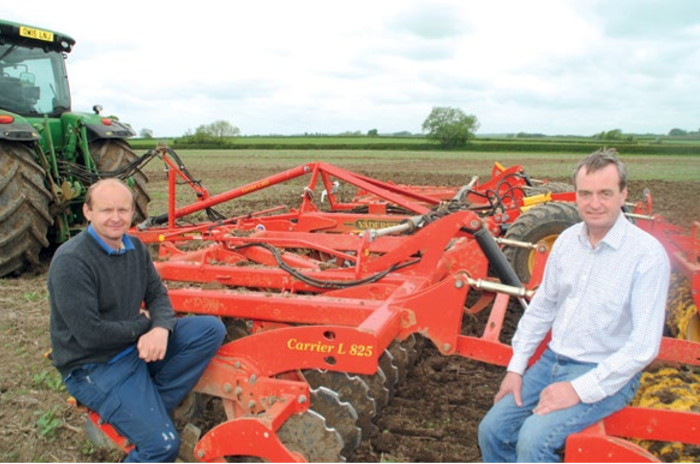
Vaderstad
Vaderstad’s Carrier Working on Blackgrass Prone Farms
Vaderstad know that farms and farmers have to be flexible, that there is no one solution to suit all farms and therefore farmers need to find the system that works for them on their farm. Pure Direct Drilling just won’t work in every case and farmers need to find out what works for them. From this they have seen that creating a stale seedbed is one of the most important elements to contain blackgrass to a manageable level. The development of herbicides has enabled arable growers to break all the rules; they have been able to ‘farm out of a can’ as their prime means of weed control, rather than using rotations and other cultural methods. One of the results of that reliance on chemicals is that blackgrass has become an extremely serious problem on many arable farms.
David Taylor of Waterloo Farm, Fringford, found himself in this situation, where he grows 2000 acres of combinable crops; winter wheat, hybrid winter barley, oats, beans and oilseed rape in a rotation to fit the ground. David says: “The blackgrass problem, especially on the heavy land, has changed the way we farm,” “To contain the weed to a manageable level we still need herbicides, but alongside cultural control, where it is extremely important to get a good chit; creating the stale seedbed is one of the most important jobs on the farm.”

Operator Russell Deeley (left) and David Taylor, who comments: “making a stale seedbed is now one of the most important jobs on the farm”.
Five years ago David moved the target autumn drilling date from September to October to extend the length of the chitting period. But the issue of actually creating the best stale seedbed, on soils that run from brash to clays, was addressed 11 years ago.
“We were running a set of heavy discs followed by a tined cultivator,” he explains, “but it was difficult to set it to move only the top two inches on the heavy ground. I always wanted an implement that just tickles the ground cheaply and quickly. A neighbour had a Vaderstad Carrier and we tried it out on 200 acres of hard heavy land and it made the seedbed I was looking for. The number of discs on the Carrier means it creates only a shallow tilth, but also chops trash and produces a good soil/ residue mix.”
The outcome was the purchase of a 5m Carrier which then was replaced it with an 8.25m-wide L825 model last season. “We chop and spread the majority of the straw and to get as long a chit as possible – the longer the better – the Carrier goes in as soon as we can behind the combine,” explains Mr Taylor.
“We go down only two inches on stubble but the Carrier is a multi-functional tool; it’ll happily create four to five inches of tilth on previously worked ground. “We still have to go deep to maintain drainage, so we leave the field for as long as time allows after the Carrier before cultivating down to about nine inches with a disc/tine implement fitted with a double press to firm the ground, a sequence that gives us a good volunteer and blackgrass chit.
We apply glyphosate before and after the deep cultivations and in front of the drill.” In addition to the longer and better stale seedbed David Taylor is also using varieties in his battle against blackgrass. “This year we have 500 acres down to hybrid winter barley, our second season with the strain,” he says, “it’s extremely prolific in the spring and out-runs the black grass. And I’m considering going back to two winter barleys in the rotation; it will enable us to start combining in July and give us an even longer stale seedbed.”
On Farm Machinery
When the time came to replace the Carrier David did look at another make of shallow cultivator but decided to stay with “what they knew”. Working behind Waterloo Farm’s John Deere 8345R or Case IH Puma 230 the additional width of the Carrier L825 will enable it to easily keep up with the combine, a New Holland CR9080 with a 9.1m table. Output will be around the 200 acres/ day mark,” comments operator Russell Deeley.
“It also means that if we have only a two to three hour window we can get an appreciable amount done, which all helps with timeliness.” Mr Taylor adds: “I can’t think of another cultivator with the Carrier’s versatility, one that enables an extremely shallow cultivation and levels and firms the ground. It has made all our other cultivations implements virtually redundant and enabled us to practice a cultural and chemical programme that keeps our blackgrass to a manageable level.”
